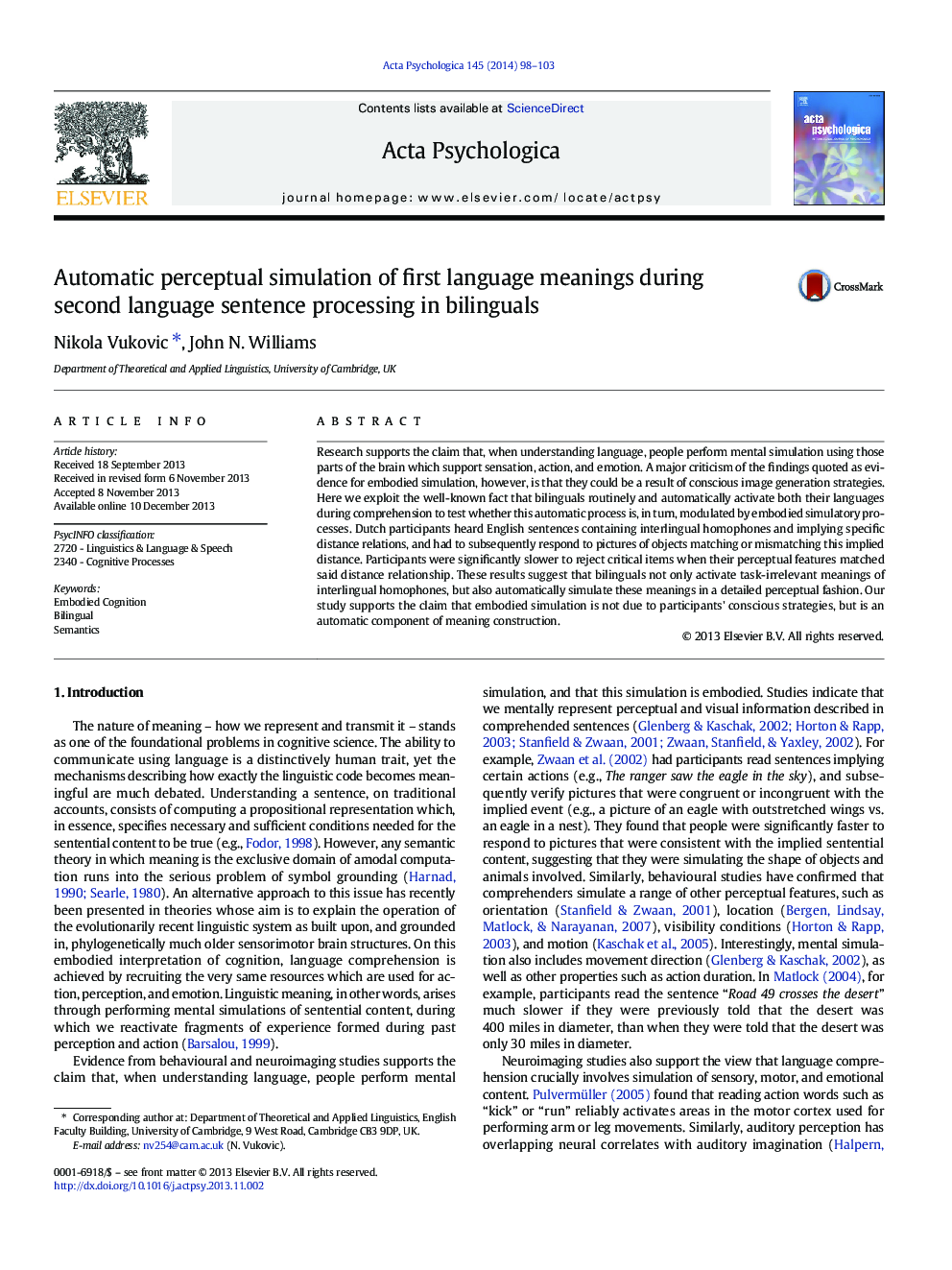| Article ID | Journal | Published Year | Pages | File Type |
|---|---|---|---|---|
| 919849 | Acta Psychologica | 2014 | 6 Pages |
•Embodied cognition theories posit perceptual simulation as integral to semantics.•Bilinguals activate L1 meanings when reading L2 homophone sentences.•These L1 meanings are perceptually simulated based on sentence-implied perspective.•Study provides novel evidence for the automaticity of embodied simulation.
Research supports the claim that, when understanding language, people perform mental simulation using those parts of the brain which support sensation, action, and emotion. A major criticism of the findings quoted as evidence for embodied simulation, however, is that they could be a result of conscious image generation strategies. Here we exploit the well-known fact that bilinguals routinely and automatically activate both their languages during comprehension to test whether this automatic process is, in turn, modulated by embodied simulatory processes. Dutch participants heard English sentences containing interlingual homophones and implying specific distance relations, and had to subsequently respond to pictures of objects matching or mismatching this implied distance. Participants were significantly slower to reject critical items when their perceptual features matched said distance relationship. These results suggest that bilinguals not only activate task-irrelevant meanings of interlingual homophones, but also automatically simulate these meanings in a detailed perceptual fashion. Our study supports the claim that embodied simulation is not due to participants' conscious strategies, but is an automatic component of meaning construction.
